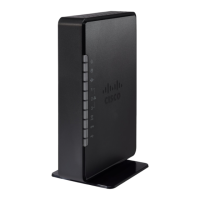VPN
Site-to-Site IPsec VPN
Cisco RV132W ADSL2+ Wireless-N and RV134W VDSL2 Wireless-AC VPN Router Administration Guide 112
6
Certificate Management
A digital certificate certifies the ownership of a public key by the named subject of
the certificate. This allows others (relying parties) to rely upon signatures or
assertions made by the private key that corresponds to the public key that is
certified. In this model of trust relationships, a CA is a trusted third party that is
trusted by both the subject (owner) of the certificate and the party relying upon
the certificate. CAs are characteristic of many public key infrastructure (PKI)
schemes.
The table has a self-signed local certificate by default. All imported CA certificates
and local certificates, as well as the generated CSR, are also shown in the table.
The default local certificate is self-signed, and may be exported, but not deleted. It
is used only by HTTPS GUI access. All other local certificates can be deleted and
exported. The CA certificates can be deleted but not exported. The CSRs can be
deleted and exported. The “Action” column also has an “Import” button for the
CSRs. It is used to import the local certificate that the CA issues based on this
CSR.
Use Certificate Management to generate and install SSL certificates.
To import a certificate:
STEP 1 Select VPN > Certificate Management. In the Certificate Management table,
click Import Certificate.
STEP 2 Select Import CA or Import Local Certificate.
STEP 3 Browse and locate certificate. The RV132W/RV134W only support PEM format
certificate. Please make sure the certificate format is PEM and file extension name
is .pem.
STEP 4 Click Start Upload.
STEP 5 Click Save.

